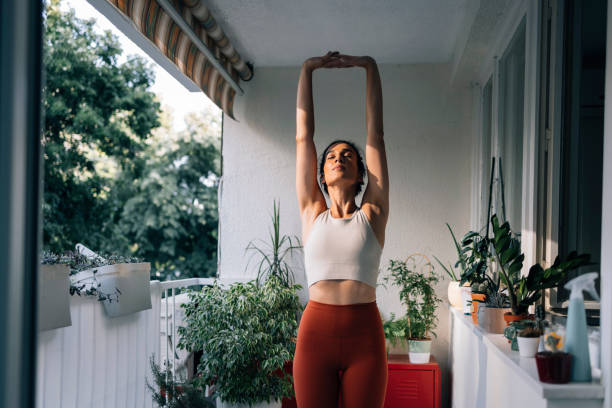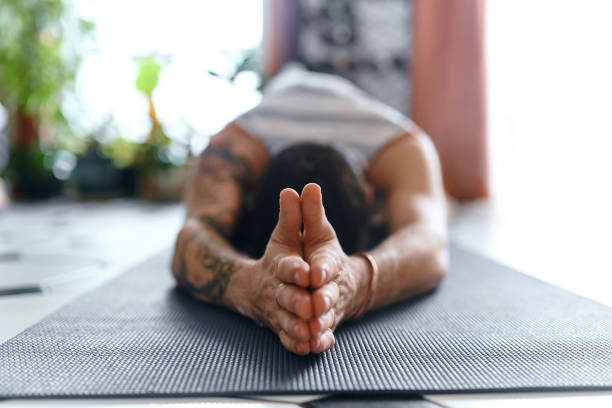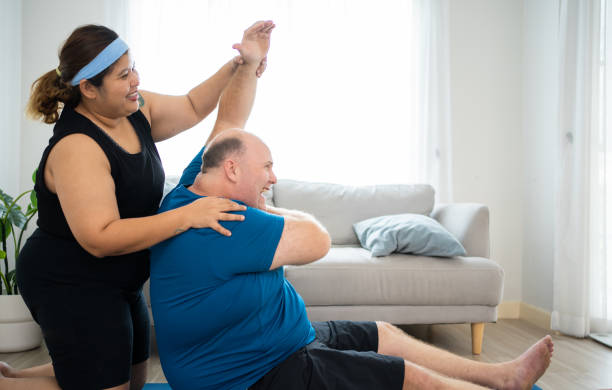Workouts
Experimenting With Different Styles Of Yoga
As we continue to explore the world of yoga, we discover that there are several types that cater to different needs and goals. Each technique has distinct advantages and can help us attain physical, mental, and emotional well-being. Experimenting with different yoga techniques can help us identify the practice that best suits our specific needs and goals.
From the regimented sequences of Ashtanga to the soothing stretches of Yin yoga, there is a yoga style for everyone. Some yoga methods emphasize physical postures (asanas), while others focus on breathwork (pranayama) or meditation. By experimenting with different yoga methods, we can determine which ones connect with us the best and implement them into our daily routine.
In this article, we’ll look at the many styles of yoga and their particular benefits. We’ll also talk about how practicing with different yoga methods can help us find the practice that works best for us. Whether you’re new to yoga or a seasoned practitioner, this article will give you useful insights into the world of yoga and its numerous advantages.

Understanding Yoga Styles
There are many different yoga styles to select from. Each style has a distinct focus and approach to the physical practice of yoga. In this section, we’ll look at some of the most popular yoga styles and what makes them special.
Hatha Yoga
Hatha yoga is a gentle yoga technique that emphasizes physical postures (asanas) and breath control (pranayama) to achieve balance and harmony in the body and mind. It is an excellent choice for beginners or anyone seeking a more mild practice. Hatha yoga sessions often consist of a combination of standing and seated positions, as well as some basic breathing exercises.
Vinyasa and Ashtanga
Vinyasa and Ashtanga yoga are both dynamic types of yoga that emphasize transitioning from one posture to the next in a continuous sequence. Vinyasa yoga is a broad phrase that encompasses all styles of yoga that incorporate flowing movements and breathwork. Ashtanga yoga, on the other hand, is a type of yoga that follows a predetermined sequence of poses and is usually more physically demanding than Vinyasa.
Iyengar Yoga
Iyengar yoga is a kind of yoga that emphasizes precise alignment and the use of props (such as blocks, straps, and blankets) to assist students in achieving correct alignment in each posture. This kind of yoga is ideal for anyone wishing to improve their posture, flexibility, and strength.
Bikram & Hot Yoga
Bikram and Hot yoga are two types of yoga that are done in a heated atmosphere (typically around 100 degrees Fahrenheit). Bikram yoga is often practiced in a room heated to 105 degrees Fahrenheit, following a prescribed sequence of 26 poses. Hot yoga, on the other hand, is a broader word that encompasses any kind of yoga practiced in a heated atmosphere. These yoga methods are ideal for everyone who wants to sweat and purify their bodies.
Restorative and Yin Yoga
Restorative and Yin yoga are both yoga forms that emphasize relaxation and the release of tension in the body. Restorative yoga normally uses props (such as bolsters and blankets) to support the body in each posture, whereas yin yoga holds poses for extended periods of time (usually 3-5 minutes) to stretch the body’s connective tissues. These yoga methods are ideal for anyone wishing to relax and de-stress.
Overall, there are numerous yoga types to pick from, each with their own distinct benefits and focus. By experimenting with different methods, we can discover a yoga practice that speaks to our unique selves and helps us reach our physical and mental goals.

The Role of Props and Alignment
When experimenting with different yoga methods, it’s critical to understand the importance of props and alignment in your practice. Props like blocks, straps, bolsters, and blankets can be quite useful for providing support, stability, and safety throughout your practice. In this section, we’ll look at how to utilize yoga props correctly and why proper alignment is so important for injury prevention and overall physical and mental well-being.
Using Yoga Props
Yoga props can be used to alter and deepen poses, making them more accessible or demanding based on your specific requirements. Blocks, for example, can be utilized to bring the ground closer to you in standing positions, whereas straps can help you reach deeper in seated postures. Bolsters and blankets can provide support and relaxation during restorative poses.
It’s vital to remember that props aren’t a crutch, but rather a tool for finding perfect alignment and expanding your practice. As we become more aware of our physical limitations, props can assist us in safely and successfully exploring our limits.
Importance of Alignment
Proper alignment is required for a safe and productive yoga practice. When we align our bodies in a posture, we establish a sturdy foundation that enables us to move with ease and elegance. Alignment also helps to avoid injury by lowering stress on the joints and muscles.
In addition to physical benefits, good alignment can help you focus your mind and become more aware of the present moment. In each pose, we create mindfulness and connection to our inner self by focusing on our body and breath.
Finally, props and alignment are really important in our yoga practice. We may deepen our practice, avoid injury, and foster physical and mental well-being by strategically using props and aligning our bodies in each pose.

Yoga for Wellness and Healing
Yoga is a fantastic way to improve overall health and wellness. In addition to its physical benefits, yoga can boost our mental and emotional health. By trying with various yoga methods, we can find the practice that best meets our own needs.
Mental and Emotional Benefits
Yoga has been demonstrated to help reduce stress, anxiety, and sadness. Yoga breathing exercises and relaxation techniques help to relax the nervous system. Regular yoga practice can help us learn to control our stress and increase our general sense of well-being.
Physical Health and Recovery
Yoga can also help anyone with physical limitations, back discomfort, or injuries. Many yoga forms are therapeutic, promoting relaxation, pain relief, and flexibility. Yoga can also help us get better sleep and recover faster from physical exertion.
Finally, yoga is a great way to improve general health and wellness. We may reap the many advantages of this ancient practice by experimenting with various yoga methods and incorporating them into our everyday routine.

Deepening Your Yoga Practice
As we progress through our yoga journey, we may find ourselves desiring to deepen our practice. There are numerous ways to accomplish this, but ultimately it comes down to determining what works best for us. Here are a few strategies to improve your yoga practice:
Incorporating Meditation and Breathwork
Meditation and breathwork are vital parts of yoga practice. They help us concentrate our minds and become more conscious of our body. Incorporating these practices into our yoga regimen can help us develop our practice and achieve a higher level of calm and relaxation.
Pranayama, or breathwork, is an effective technique for calming the mind and body. Controlling our breath allows us to manage our nervous system and develop a better sense of equilibrium. Ujjayi breath, Kapalabhati breath, and Nadi Shodhana breath are three common pranayama techniques.
Meditation is another effective method for enhancing our yoga practice. We can improve our awareness and focus by sitting quiet and observing our thoughts. There are numerous meditation approaches to try, including mindfulness meditation, loving-kindness meditation, and mantra meditation.
Yoga Philosophy and Spiritual Growth
Yoga is both a physical and spiritual exercise. By delving into the philosophy of yoga, we can have a better knowledge of the practice and experience spiritual progress.
Patanjali’s Yoga Sutras are a foundational text in yoga philosophy. It describes the eight limbs of yoga, which include ethical principles, physical postures, breathwork, meditation, and more. Studying the Yoga Sutras and other writings allows us to obtain a better knowledge of the practice and its underlying concepts.
Exploring the chakras, or body’s energy centers, is another approach to enrich our yoga practice. Each chakra is associated with distinct physical, emotional, and spiritual characteristics. Learning about the chakras and implementing activities to balance them can help us reach more harmony and balance in our life.
Finally, there are numerous strategies to deepen our yoga practice. We can achieve a higher level of attention, awareness, and spiritual growth by adding meditation and breathwork, researching yoga philosophy, and developing a personalized practice that works for us.
Conclusion
As I delved into the various practices, I discovered that the diversity of yoga styles caters to different needs and preferences. Whether seeking strength and flexibility in Power yoga or embracing mindfulness in Yin yoga, there’s a style for every individual and every mood.
What stood out most during this exploration is the importance of listening to my body and tuning into its needs. The flexibility to choose a style that resonates on a particular day fosters a sense of autonomy and empowerment in my yoga journey.
In conclusion, experimenting with different styles of yoga is akin to navigating a vast and diverse landscape of well-being. Each practice adds a unique color to the canvas of my personal growth, promoting not only physical fitness but also mental clarity and emotional balance. As I continue to embrace this journey, I find that the beauty of yoga lies in its versatility, offering a path for everyone to find harmony and peace.
Journey of self discovery


